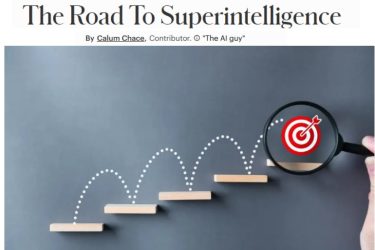Hello, New York!
For the first time, lawyers can apply legal analytics to cases heard in New York County Supreme Court (“New York County”). Lex Machina, a subsidiary of RELX, the British information corporate formerly known as Reed Elsevier, is announcing today the publication of data on 119,000 cases. The data is based on both dockets (analogous to the abstracts of academic papers) and documents (the full papers).
Numerically, this caseload is not a massive expansion to the 4.5m cases already in Lex Machina’s database, but Karl Harris, Lex Machina’s CEO, argues it is an important milestone because New York County is such a significant jurisdiction.
Legal analytics
Lawyers are not renowned for an addiction to statistics and maths. They traditionally favour “anecdata” over data, basing their advice on the wisdom and insights built up during years – often decades – of experience. Experience is what enables them to answer urgent client questions, such as “How long will this case take to reach the court?”, “How serious is our opponent?”, “How good is their law firm?”, “Should we offer a settlement, and if so, when?”, and of course, “If it does go to court, will we win?” In big-money cases, law firms buttress this experience by deploying armies of paralegals to spend days or weeks researching the matter.
Increasingly, thanks to artificial intelligence and the data sourced and analysed by firms like Lex Machina, law firms can answer these questions in minutes, and with higher levels of confidence. And in addition to improving the quality of legal advice (and hence the client’s decisions), legal analytics is reducing bias in the courtroom by providing full transparency, speeding up court proceedings, and improving access to justice. In future, it may be considered professional malpractice not to use legal analytics.
Spurred by the great recession
Karl Harris told me that legal analytics – a term coined by Lex Machina – was gestated during the long recovery from the great recession. With their budgets under intense pressure, clients prised open the “black box” of legal billing. The tech giants in particular refused to pay $700 an hour for first-year associates, arguing that those costs should be absorbed by law firms’ training budgets, or better yet, automated by the newly powerful techniques of machine learning.
Might the tech giants go one further, and disintermediate firms like Lex Machina? How can these firms keep their data proprietary when Google, OpenAI and the rest can crawl the entire web in a matter of hours?
Subject matter expertise
As is often the case, the answer lies in industry know-how. The New York court could not simply publish all its cases. The formatting and the structure is inconsistent, and they are under-resourced. Furthermore, the court system is fragmented, with every court adopting different procedures, and those procedures changing over time. It takes insider knowledge – and plenty of time and effort – to collate the information, and render it amenable to analysis by machines. The resulting databases are not copyright, but they are proprietary. Karl Harris is confident that while the tech giants span the economy with their general systems, there remains plenty of scope for smaller, more focused players to operate in the industry verticals beneath them.
Fewer lawyers?
Q: What do you call a hundred lawyers at the bottom of the ocean? A: A good start. There are thousands of anti-lawyer jokes like this, and few would claim that the profession is the world’s favourite. (Especially divorce lawyers.) But lawyers are essential to the smooth functioning of commerce, and society at large, and the profession provides lucrative employment to lots of clever graduates.
As artificial intelligence continues to improve at an exponential rate, will that change? Will the day come when law firms cannot promote anyone to partner because machines are doing all the jobs in which young lawyers used to learn the trade? And later, will the machines be so good at obtaining and analysing the data, and dispensing pithy and accurate advice, that those law firms no longer need most of their partners?
Many say not. As AI makes the administration of the law more efficient, there will be scope for much more lawyering. More disputes can be quickly settled by asking machines to scrutinise the legal precedents, and also the ever-growing body of statute law. For a long time to come, a machine will get you most of the way to an answer, but a well-informed human will be needed to sense-check the machine’s findings, and also to put the legal analysis into the context of human affairs, whether they are business affairs, or affairs of the heart.
Fully automated luxury capitalism
What about the longer term? The physicist Albert Bartlett said “The greatest shortcoming of the human race is our inability to understand the exponential”. Assuming the regular doubling of computer power known as Moore’s Law continues, the machines we have in ten years’ time will be 128 times more powerful than the ones we have today. In 20 years time they will be 8,000 times more powerful, and in 30 years, they will be a million times more powerful.
At that point, it is far from clear how many human lawyers will be needed. If, as many believe, technological unemployment is coming in a generation or so, we need to figure out how that make the consequence wonderful. We need to figure out how to create fully automated luxury capitalism.



